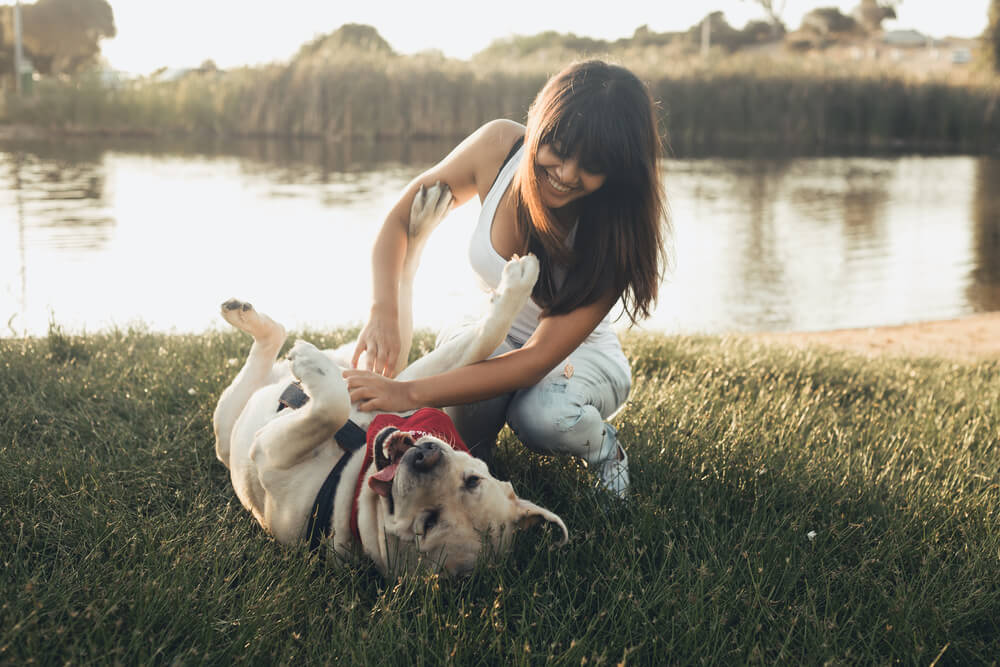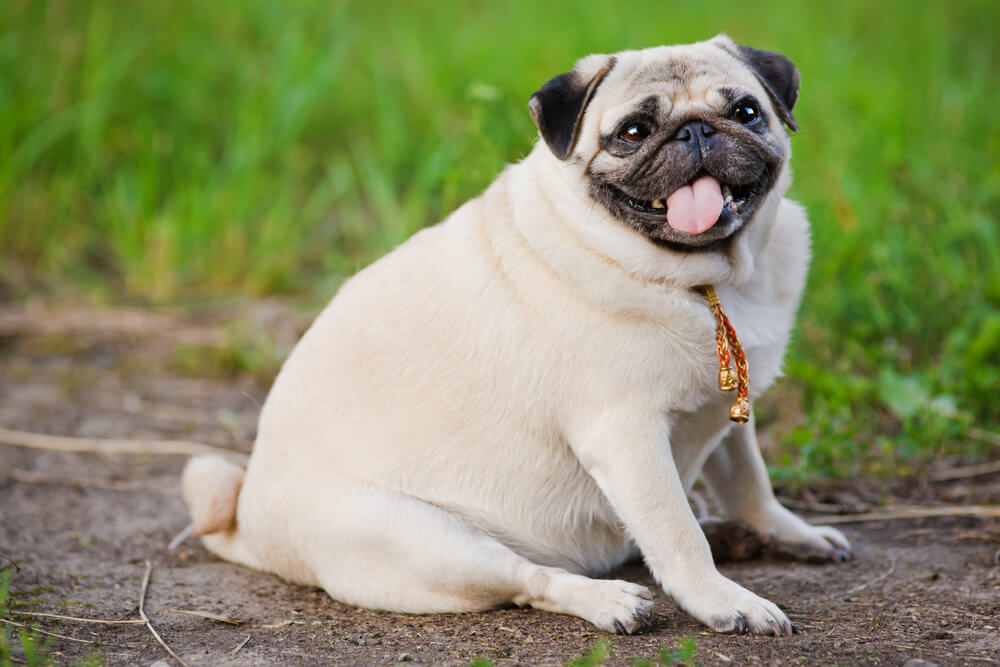A little extra weight can make a big difference in your dog’s life. While many owners don’t seem to mind their dog being fat, nothing is cute about the increased risks caused by canine obesity, which include:
- Cancer
- Arthritis
- Kidney disease
- Chronic inflammation
- Respiratory disorders
- Skin disorders
- Orthopedic disease
Start managing your dog’s weight today, with these five tips for preventing dog obesity.
#1: Preventive care prevents a pudgy pet
Your pet’s routine appointments are great opportunities to assess their weight and body condition. A Neighborhood Vets Mobile Care veterinarian will compare your pet’s current weight and physical condition with their record at each visit, looking for trends. A few ounces or pounds may seem minor, but they can add significant stress to your pet’s body. We will likely recommend diagnostic blood work, if your pet has suddenly gained weight, to rule out medical causes.
Your pet may not fit on your bathroom scale, but you can easily detect weight changes at home.
- Rib check — Your pet’s ribs should be palpable, without pressing or pushing. The pet equivalent of “sucking in your stomach” works for them about as well as it works for us.
- Waistline — In short-haired breeds, a defined waist should be visible behind the ribs when viewed from above and the side.
#2: Count your canine’s calories
Proactive steps to prevent weight gain can have a lifelong impact. Dogs fed portion-controlled diets live longer than those who are allowed to eat freely. Additionally, dogs fed restricted calories maintain a healthier body mass, and experience a delay in age-related physical changes.
However, nutritional needs are not one-size-fits-all. While dog food packaging provides a weight-based feeding suggestion, your dog’s daily calorie requirement depends on their size, age, lifestyle, and health. Ask our Dr. Neiman for your pet’s ideal weight and caloric requirements, or consult this guide. Once you have a number, compare everything your dog actually eats in a day with what they should eat.
- Dog food — Check the bag of food’s label, or visit the manufacturer’s website, to determine how many kilocalories (kcal) are in one cup. Always use a measuring cup to dole out your pet’s food.
- Dog treats — Plain biscuits can contain a shocking number of calories.
- Pet chews — Dental chews, bully sticks, and filled bones can pack on the pounds.
- Forbidden food — While an occasional indulgence may not hurt your pet, regular human food can be detrimental.
- Training rewards — Positive reinforcement can negatively impact your pet’s weight.
#3: Exercise your dog correctly to burn calories
Proper exercise increases cardiovascular effort. A meandering walk around the neighborhood, which includes 20 stops to sniff or eliminate, does not physically benefit your dog.
While we do not want every walk to be a disciplined calisthenic event, we do want you to know how to walk your dog for fitness:
- Keep your dog on a short, 4- to 6-foot leash.
- Step out on your path, moving with purpose.
- Encourage and praise your dog for keeping with you, but don’t pull or drag them.
- Start with a short walk, and do not allow them to sniff or roam until you reach your destination.
- On the return leg, you can relax their leash, and let them “go sniff,” and do their business.
- Gradually increase the time or distance of your fitness walk until your dog, depending on their age, can maintain a steady pace for 15 to 30 minutes.
If you cannot exercise your dog, consider hiring a dog walker or neighbor, giving them specific instructions. The cost of a dog walker will be significantly less than mountains of veterinary bills for treating your dog’s chronic, weight-related pain and disease.
#4: Slow your dog’s eating to decrease hunger
Chowhounds practically inhale their food, which can not only harm your dog’s health, but also decrease their satisfaction and leave them wanting more. Dogs who eat more slowly feel more satiated. Consider one of these methods:
- Slow feeder — Bowls with grooves and barriers will make your dog work harder.
- Puzzle toy — Problem-solving will force your dog to slow down and think.
- Food toy — Stuff a Kong or similar toy with your dog’s dry food that has been soaked in water, or wet food, for long-time enjoyment. Freezing the toy will extend their enjoyment.
Supervise your dog at all times while eating. Remove your dog’s bowl or toy afterward, to prevent chewing, and maintain their interest.
#5: All they need is love—alternatives to food treats for your dog

When you’re tempted to treat your furry companion with a tasty indulgence, replace food with a belly rub, game of chase, a walk, or play with a toy that you keep for special occasions. Positive interactions will fulfill your pet’s needs in a healthier, more meaningful way than food.
While obesity prevention is best, if your dog is currently overweight, many safe options are available that will help them slim down. Call Neighborhood Vet Mobile Care, and schedule an appointment with Dr. Nieman. Her evaluation of your dog to rule out medical causes for obesity will help ensure their weight loss plan is successful.

